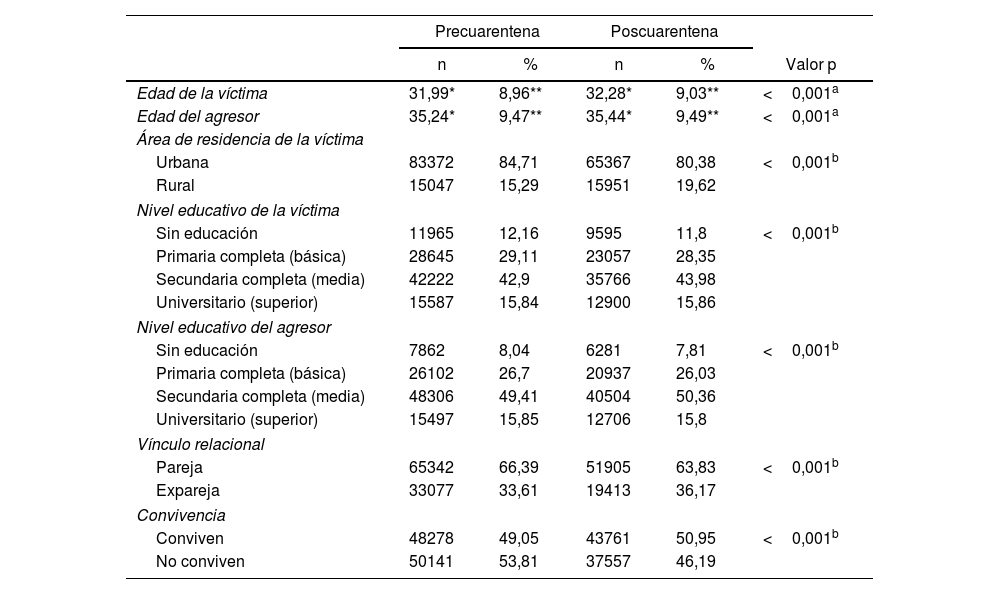La violencia de pareja es un problema frecuente a nivel mundial. La pandemia por COVID-19 y el confinamiento pusieron a los agresores y víctimas en un mismo ambiente por lo que dicho problema pudo haber aumentado. El objetivo de este estudio es visualizar la situación de violencia física de pareja en el período 2017-2022 en Perú.
Materiales y métodosA partir de la información brindada por el Centro de Emergencia Mujer, se realizó un análisis descriptivo de tendencias temporales entre enero del 2017 a diciembre del 2022, para evaluar la relación con el número de los casos se realizó un análisis de regresión y se reportaron los coeficientes de determinación antes y después al confinamiento por COVID-19.
ResultadosSe obtuvo un total de 179737 casos de violencia física de pareja durante el período de estudios. Se observó una tendencia a la disminución los meses posteriores al confinamiento por COVID-19. La zona rural mantuvo una constancia en el número de casos antes y después de la pandemia. También se obtuvieron diferencias importantes en las parejas o exparejas que conviven y no conviven, siendo aquellas que no conviven con mayor disminución a finales del 2022.
ConclusiónLas tendencias del número de casos tuvieron diferencias antes y después del confinamiento por COVID-19 de acuerdo con las variables estudiadas. Algunas situaciones como la situación familiar pospandemia o la situación de vigilancia en los casos de violencia pueden influir en los resultados presentados y requieren un análisis más riguroso.
Intimate partner violence is a frequent problem worldwide. The COVID-19 pandemic and confinement put both aggressors and victims in the same environment, which may have increased this problem. The aim of this study is to visualize the physical violence situation in couples from 2017 to 2022 in Peru.
Materials and methodsUsing information provided by the Center for Women's Emergency, a descriptive analysis of temporal trends from January 2017 to December 2022 was carried out. To evaluate the relationship with the number of cases, a regression analysis was performed, and determination coefficients were reported before and after COVID-19 confinement.
ResultsA total of 179,737 cases of physical violence in couples were obtained during the study period. A tendency towards a decrease was observed in the months following COVID-19 confinement in all categories. The rural area maintained a persistence in the number of cases before and after the pandemic. Significant differences were also found in couples or ex-couples who live together or apart, with those who do not live together having a greater decrease by the end of 2022.
ConclusionThe trends in the number of cases showed differences before and after the COVID-19 lockdown, according to the studied variables. Certain factors, such as post-pandemic family situations or the surveillance status in cases of violence, could impact the presented outcomes and necessitate a more rigorous analysis.











